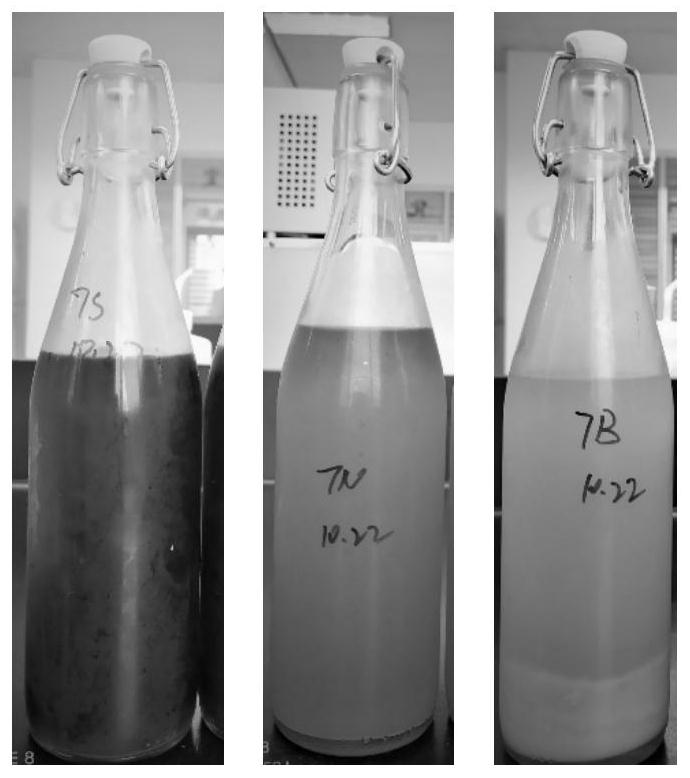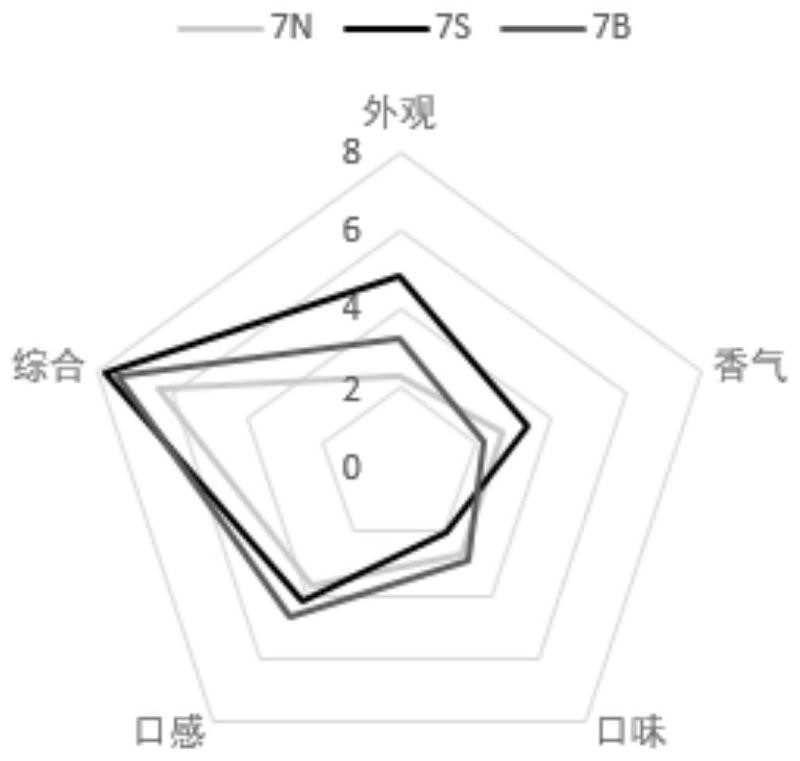Brewing method of originally brewed low-alcohol raspberry beer
A raspberry beer and raspberry technology, which is applied in the field of brewing original low-alcohol raspberry beer, can solve the problems of poor taste and lack of fermentation aroma, etc., and achieve the effect of clear and bright appearance, moderate taste and rich raspberry aroma
- Summary
- Abstract
- Description
- Claims
- Application Information
AI Technical Summary
Problems solved by technology
Method used
Image
Examples
Embodiment 1
[0041] Embodiment 1, original brewing fermented fruit juice type selection
[0042] 1) Classify according to the state and sugar content of fruit juice concentrate: A, semi-solid type represented by passion fruit concentrated juice, B, low sugar content (≤100g / L) liquid type represented by lemon concentrated juice , C, high sugar content (≥300g / L) liquid class represented by concentrated raspberry juice (Table 1).
[0043] Table 1 Characteristics of different juice types
[0044] Types of representative juice concentrate state Sugar content (g / L) semi-solid passion fruit semi-solid (slurry) 246 low sugar liquids lemon liquid 73 high sugar liquids raspberry liquid 374
[0045] 2) Dilute the above three types of fruit juice concentrates with water and evaluate them. According to the comprehensive scores such as acidity, sweetness, aroma, and taste, the initial addition ratio of the concentrated juices to the fermented wort is 10...
Embodiment 2
[0053] Embodiment 2, the optimization of fruit juice addition mode
[0054] 1) Dilute the concentrated raspberry juice with 7°P wort for evaluation, and determine the optimal ratio of the concentrated juice according to the comprehensive scores such as acidity, sweetness, aroma, and mouthfeel, that is, the volume of the concentrated raspberry juice added to the wort is the wort 5% of the volume;
[0055] 2) Design two different methods of adding concentrated juice (a. main fermentation addition; b. post-fermentation addition). In order to ensure the normal proliferation of yeast in method b, fructose syrup is supplemented during the main fermentation to make it the same as the main fermentation method in method a. The fermentation process remains the same.
[0056] 3) Supplement the wort with 2% wort volume of F55 fructose syrup, and expand the Lutheran yeast until the number of yeast reaches the inoculum requirement.
[0057] 4) Remove the supernatant from the expansion med...
Embodiment 3
[0063] Embodiment 3, the brewing of low-alcohol raspberry beer (100L scale)
[0064] In order to balance the sourness brought by the product, a sweetener is added during the brewing process, using the characteristics of Lutheran yeasts not fermenting maltose, and the sweetener is malt syrup with a mass fraction of 75%.
[0065] 1) Supplement F55 fructose syrup in 7°P wort until the content of fructose syrup is 2% (v / v volume ratio) to obtain a medium, insert Lutheran yeast into the medium and gradually expand at 25°C , see the expansion process Figure 5 . Collect the expansion culture fermentation broth, the fermentation broth is Lutheran yeast liquid, and the content of Lutheran yeast in this Lutheran yeast liquid is 79 × 10 6 cfu / mL.
[0066] 2) Saccharification: Put 8.4kg of barley malt and 30L of water into the mashing pot. After mixing, the ratio of material to water (ie barley malt:water) is 1:3.5 (1kg:3.5L), and the total duration of saccharification is 120min. Im...
PUM
 Login to View More
Login to View More Abstract
Description
Claims
Application Information
 Login to View More
Login to View More - R&D
- Intellectual Property
- Life Sciences
- Materials
- Tech Scout
- Unparalleled Data Quality
- Higher Quality Content
- 60% Fewer Hallucinations
Browse by: Latest US Patents, China's latest patents, Technical Efficacy Thesaurus, Application Domain, Technology Topic, Popular Technical Reports.
© 2025 PatSnap. All rights reserved.Legal|Privacy policy|Modern Slavery Act Transparency Statement|Sitemap|About US| Contact US: help@patsnap.com



